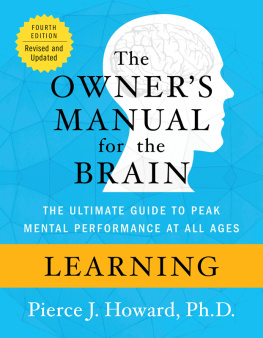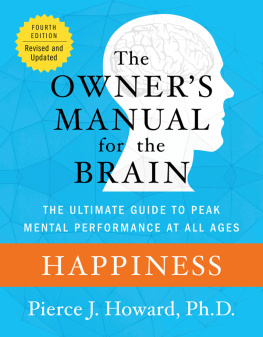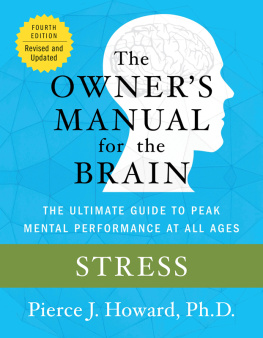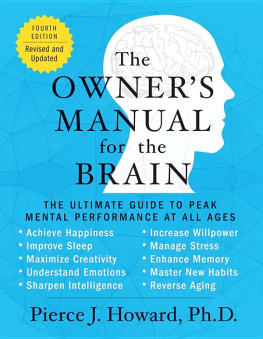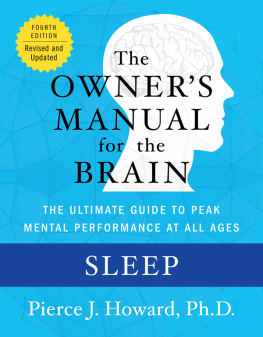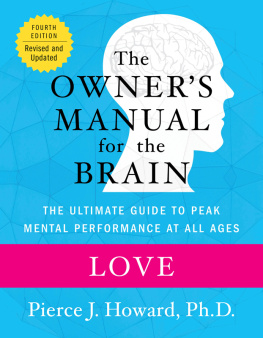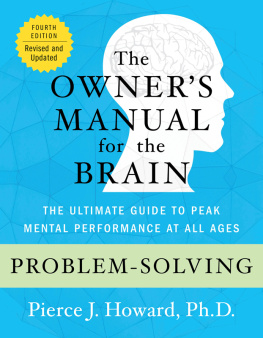D o not go gentle into that good night. Dylan Thomas | Use It or Lose It |
A lthough not all of us will be blessed with the opportunity to experience the perspective of old age, certainly all of us have an interest in knowing what research in cognitive science has discovered about the effect of aging on mental structure and ability. This chapter focuses on findings that can help us to age with maximum effectiveness and to better understand those who are preceding us into the Golden Years.
First, one note. Much of what we know about adult development is coming out of the Baltimore Longitudinal Study of Aging, in which 2,400 volunteers of all ages travel annually (at their own expense) to Johns Hopkins Bayview Medical Center for three days of examination. Begun in 1958, it is the longest-running study of its kind. In the first 20 years, only white men were studied, with women and African Americans added to the study in 1978. African Americans are still underrepresented at 13 percent (compared with the target of 20 percent). The study continues to recruit volunteers in specific age, race, and sex categories. If you are interested in joining, call 800-225-2572. Among their findings: personality doesnt change essentially from age 30 on, vocabulary continues to grow into later life, problem-solving and reasoning skills continue into old age, and people age at different rates.
Parallel to the Baltimore study (which emphasizes personality), the Seattle Longitudinal Study emphasizes mental ability over the life span. The director is Warner Schaie (a professor at Pennsylvania State University). Here are some of their major findings (Schaie, 1996, pp. 1215):
1. There is no uniform pattern of age-related changes across all intellectual abilities. Different abilities decline at different times for different sexes for different reasons.
2. The primary factors that prevent decline in mental ability are
(a) absence of cardiovascular and other chronic diseases;
(b) a favorable environment mediated by high socioeconomic status;
(c) involvement in a complex and intellectually stimulating environment;
(d) flexible personality style at midlife;
(e) maintenance of high levels of perceptual processing speed.
3. Observed decline in many community-dwelling older people might well be a function of disuse and is clearly reversible for many. Indeed, cognitive training resulted in approximately two-thirds of the experimental subjects showing significant improvement, and about 40 percent of those who had declined significantly over 14 years were returned to their predecline level.
Another adult development study just beginning to bear fruit is the Nun Study, which was initiated by graduate student David Snowdon in 1986. His study, housed at the Sanders-Brown Center on Aging at the University of Kentucky, involved nuns from School Sisters convents in Mankato, Minnesota, and six other cities, beginning with 3,926 Notre Dame sisters born between 1886 and 1916, most of whom had joined the order in their 20s. Results from this study are of particular interest because of the nuns similar lifestyles. Autopsies are beginning to reveal new knowledge, particularly about Alzheimers disease.
One promising line of research was reported by Marsel Mesulam, then of Harvard Medical School, now a psychiatry professor at Northwestern University. While at Harvard, Mesulam and other researchers identified a chemical, acetylcholinesterase, that is present at higher levels in people over 90 who have better mental abilities. The Harvard researchers have isolated a kind of cell in the brain that makes this chemical; it is hoped that, in time, drugs will be able to regulate acetylcholinesterase. In addition, researchers at Scripps Research Institute, La Jolla, California, have identified (in Science, March 2000) 61 genes that appear to control the speed of aging. These genes appear to slow down over time, leading to fragile bones, stiff joints, gum disease, and other maladies. Researchers are looking for drugs that target these genes and prevent their slowdown. In effect, they are working on perpetual youth drugs.
On another front, Barbara Sherwin, researcher at McGill University in Montreal, has reported (in New Scientist, July 31, 1999) that estrogen levels have a direct effect on womens memory. Sherwin studied 100 women who experienced sharp drops in estrogen level after their ovaries and uterus had been surgically removed. Half received HRT (hormone replacement therapy) and half received a placebo. The results: women with restored estrogen levels performed on memory tests as well as their presurgery performance, while the placebo women performed significantly lower than presurgical levels.
We are born with roughly 23 billion neurons. By making new synapses (establishing connections between neurons), the brain increases its mass threefold until the early 20s. Conventional wisdom has held that we lose some 100,000 neurons daily. This is not the case; individual rates of brain cell loss vary widely. Proportionately more are lost in the frontal and temporal cortex, especially the motor cortex, which contains the long axons from the spine necessary for balance (see appendix A). Alcohol consumption increases the daily destruction proportional to the quantity consumed (around 60,000 neurons per day for a heavy drinker or alcoholic). Sickness, medication, and untold other assailants can also increase the rate of neuronal loss. The average person loses about 10 percent of his brain weight in a lifetime. This loss in brain weight used to be interpreted as the result of deceased neurons, but today it is interpreted as the result of shrunken neurons. Men lose more mass than women, and men lose more in the left hemisphere, which controls language, than in the right, which controls visual-spatial skills. Females experience about a two-ounce drop in brain mass around menopause, whereas males experience their accelerated loss beginning somewhere around age 60.
Experts caution that we should take extra care of our brains, for, unlike other organs and body systems, neurons have not been thought to divide and duplicate or replace themselves. However, in October 1998, Fred Gage, a professor at the Salk Institute for Biological Studies in La Jolla, California, along with Swedish researchers, reported the first observed regenerated brain cells in humans. Marian Diamond, a professor of integrative biology with the University of California, Berkeley, has found a higher proportion of glial cells (structural cells, also called helper cells, which provide nutrition for other neurons), in enriched-environment rats, and also in the preserved brain of our most famous physicist. Albert Einsteins brain, protected and maintained by Princeton University scientists in 1955 when he died at age 75, shows a clearly higher ratio of glial cells to normal neurons when compared with the brains of 11 men of average intelligence. In the meantime, why not play it safe and encourage everyone to keep body and mind active? Certainly this is a modest proposal.
As a general rule, aging itself does not have a large impact on deterioration of brain function. Mary N. Haan, director of the University of California, Davis, Center for Aging and Health, reported (in Journal of the American Medical Association, July 7, 1999) that a 10-year longitudinal study of more than 5,000 community-dwelling senior citizens revealed no significant cognitive decline for 70 percent of the group. Seniors with the ApoE4 gene (associated with Alzheimers) and either atherosclerosis or diabetes were eight times more likely than others to show significant cognitive decline. In a large-scale French study of elder citizens (reported in Neurology, December 1999), persons of retirement age were found to be twice as likely to suffer a decrease in mental ability if they had untreated high blood pressure. In fact, the study suggested that antihypertensive medications have a beneficial effect on mental ability during the aging process. Although debate continues to rage on this issue, following are thirteen of what are accepted to be the most significant assailants on neurons:
Next page

